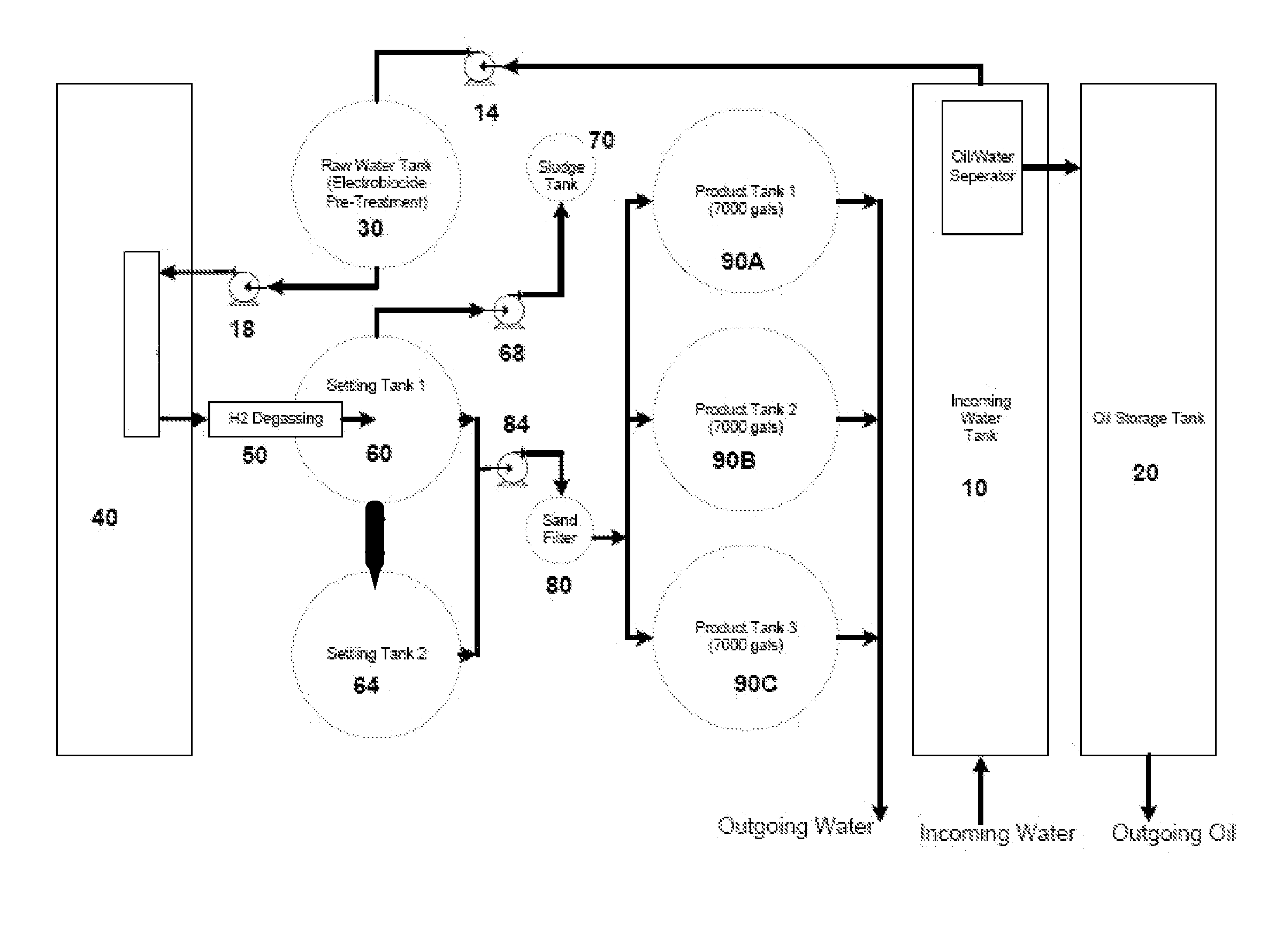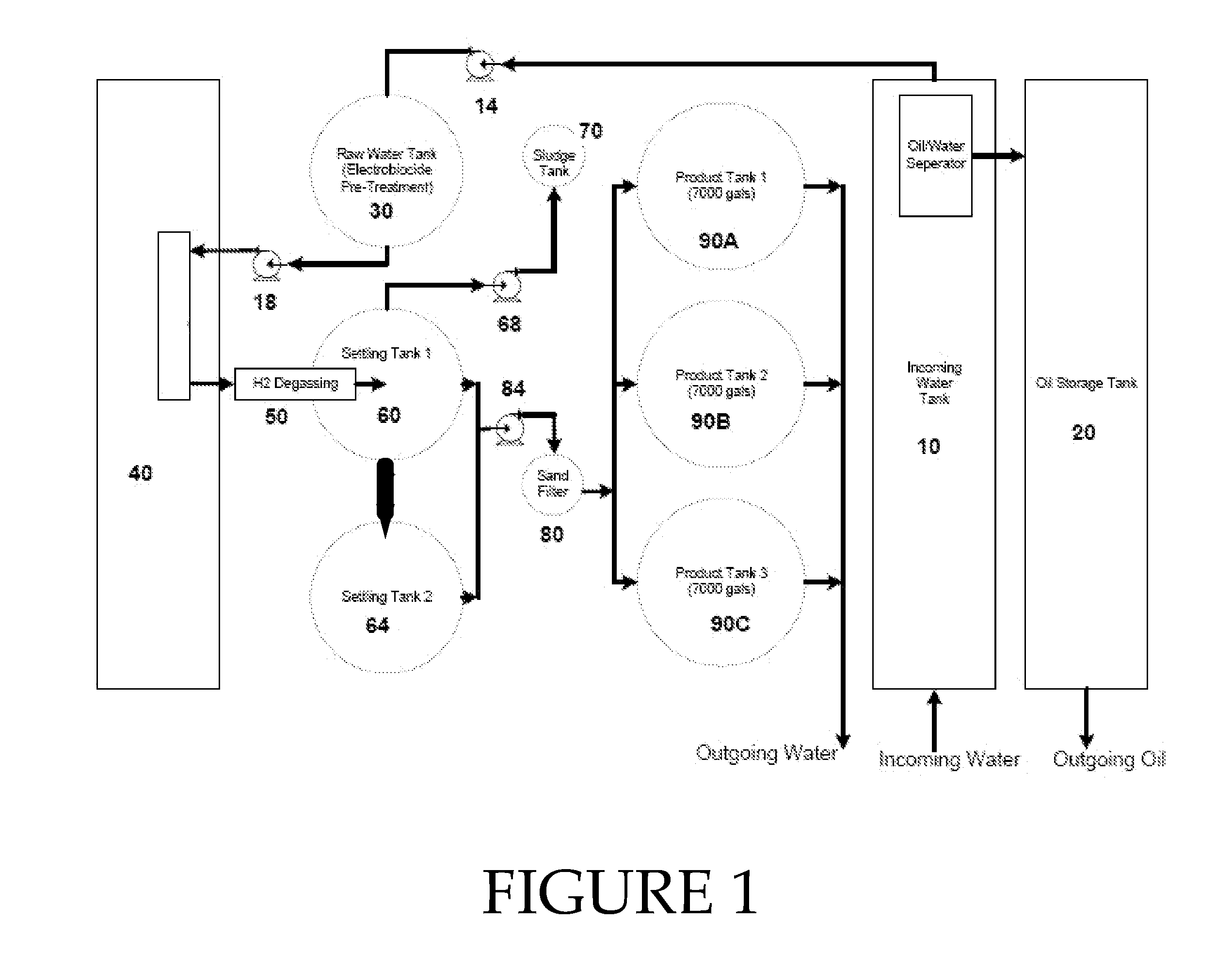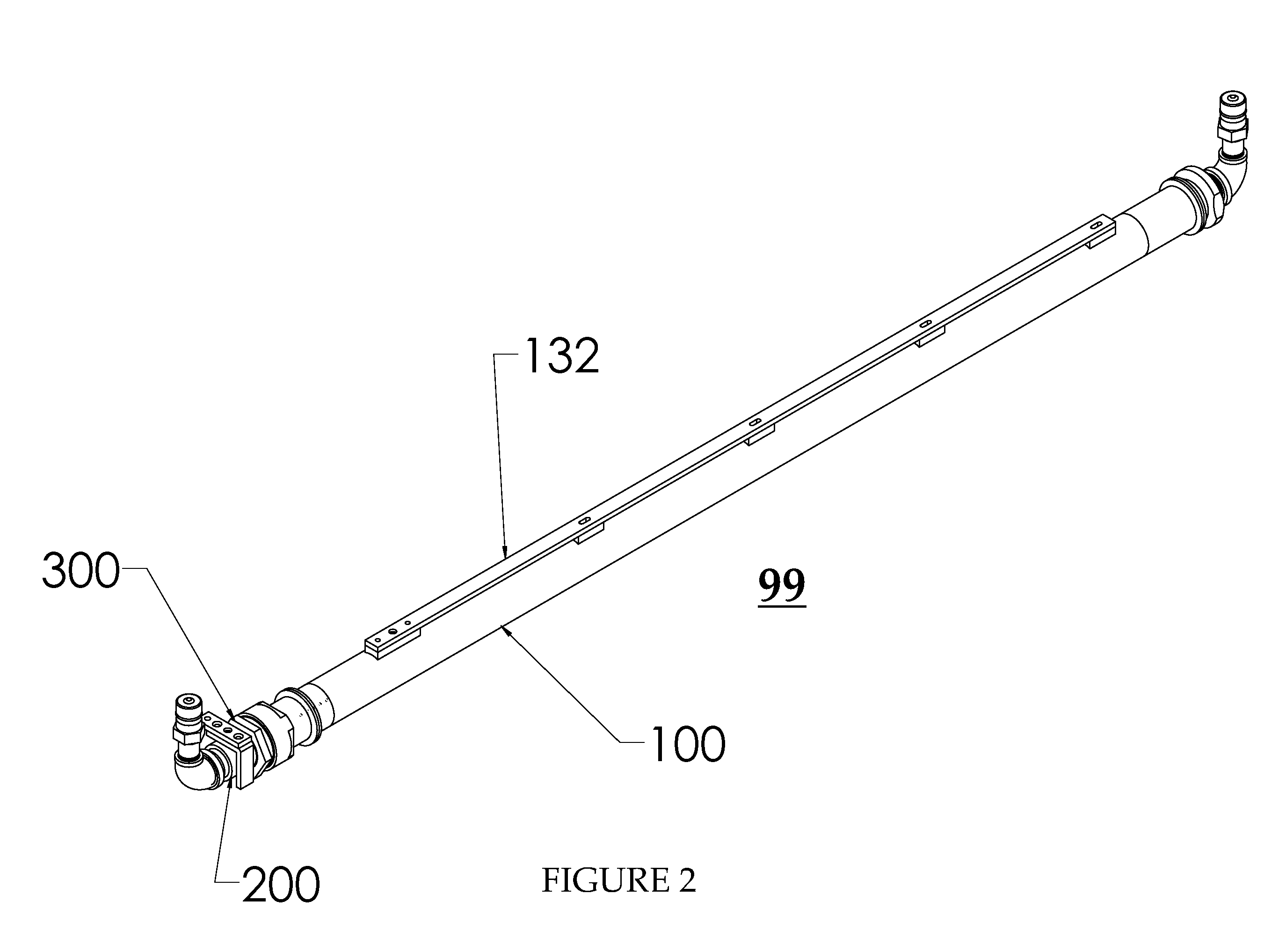Water Treatment Process
a water treatment and water technology, applied in the nature of water treatment, multi-stage water/sewage treatment, water/sewage treatment by degassing, etc., can solve the problems of large volume of contaminated pw, inability to reuse untreated pw for well-fracturing (fracturing) operations, and high compaction, so as to reduce the volume of solids for disposal
- Summary
- Abstract
- Description
- Claims
- Application Information
AI Technical Summary
Benefits of technology
Problems solved by technology
Method used
Image
Examples
example 1
[0093]Produced water that was recovered from a gas well in Texas was analyzed, and the results are shown in Table 1 below.
TABLE 1Analysis result of water from an oil recovery process.CationsAnionsIonConcentration (mg / L)IonConcentration (mg / L)Na+30420.00Cl−174780.00Ca+27818.00HCO3−1161.74Sr+21224.00SO4−297.60Mg+2844.00CO3−21.00K+512.00Ba+238.44Fe+236.05Al+36.40
example 2
[0094]The following table shows the before and after result of treating water of Example 1 in accordance with the invention. These analytical results shown were produced by processing water from Example 1 in two stages. Initial processing was performed by subjecting water with quality as shown in Example 1 through the electrocoagulation process which effectively removed suspended solids, iron, silica & silicon, bacteria and oil & grease. The treated water was allowed to settle for several minutes and then clarified through a simple media filter to remove remaining unsettled solids. This water was then subjected to second stage processing which significantly removed Total Hardness including Magnesium & Calcium and other hardness ions. All processing was done at room temperature (e.g., 20° C.).
BeforeAfter%ParameterTreatmentTreatmentReductionCommentsTotal Hardness24,000mg / L350 mg / L98.54%Almost total removal of Scaling(as CaCO3)SpeciespH6.87.0-7.4Total Suspended1740NTU1.64 NTU 99.91%Pro...
example 3
[0095]The rate of flocculation and the water clarity using methods of the invention was compared with other conventional methods.
[0096]When compared to conventional methods such as polymer or PACl addition, methods of the invention produced flocculates faster. Also, in treating high brine concentrations the addition of PACl's and other polymers are prohibitive due to the fact that a large amount of the polymers are needed with high brine levels. In addition, flocculates produced by methods of the invention separated from the water and formed what appeared to be a relatively more “unified mass” of flocculates more readily. Furthermore, visually the size of flocculates appeared to be larger using methods of the invention.
[0097]Significantly, the flocculates produced by methods of the invention appeared to settle faster and produced clarified water faster than the other processes. In addition, it was observed that the flocculates produced by methods of the invention appeared to coagula...
PUM
 Login to View More
Login to View More Abstract
Description
Claims
Application Information
 Login to View More
Login to View More - R&D
- Intellectual Property
- Life Sciences
- Materials
- Tech Scout
- Unparalleled Data Quality
- Higher Quality Content
- 60% Fewer Hallucinations
Browse by: Latest US Patents, China's latest patents, Technical Efficacy Thesaurus, Application Domain, Technology Topic, Popular Technical Reports.
© 2025 PatSnap. All rights reserved.Legal|Privacy policy|Modern Slavery Act Transparency Statement|Sitemap|About US| Contact US: help@patsnap.com



